25+ Air Travel Questions Answered
categories: UncategorizedWhen should I buy a ticket?
A number of studies have shown that approximately six weeks before a specific trip tends to be the best time to buy a ticket. The airlines penalize you both for planning ahead and not planning ahead.
If you’re planning on paying for your ticket with frequent flyer miles (more on that later) then you should look much further out, maybe even a year in advance, because only a limited number of seats are made available on any given flight for frequent fliers.
The airlines assume that much of last-minute travel will be by business travelers who are not paying the price of their own tickets and therefore less sensitive to the cost of the ticket.
There are some exceptions of course to this general rule. If you’re flying in a particularly busy time of year when planes will fill up like Christmas or Thanksgiving or if you are flying to a city for a big event then you might want to book a little further out.
Why does my flight have more than one flight number or airline?
It may seem surprising but if you book a ticket through United Airlines you won’t necessarily be flying on United Airlines. This is true of most major airlines. What you have seen is called a codeshare. A codeshare allows an airline partner, like Lufthansa in the case of United, to resell their flight through their partner airline. This is normal.
Often flight schedules are coordinated in between partner airlines to make it easy to make a connection. The codeshare mechanism allows an airline to give you access to more flights and therefore, in theory, more convenience.
What’s the difference between a direct flight and a nonstop flight?
A nonstop flight takes off from the originating airport and lands at the destination airport without stopping. The term is quite literal. Direct on the other hand is a bit misleading.
In general, a direct flight means that you can stay on the plane all the way from the originating airport to the destination, but in some cases, a direct flight is just two connecting flights that share the same flight number. In those cases, you will have to get off the plane take your stuff, walk to another gate and board a different plane with the same flight number as your first plane. In other words, the term direct is much less meaningful.
Can I Change The Name on an Airplane Ticket?
Maybe. See Can I Change The Name on an Airplane Ticket?
What is a Round the World (RTW) ticket and should I get one?
A round the world ticket is a special ticket that can save you money on a multi-city trip. It has a lot of restrictions and is limited to one particular airline alliance. For more information check out our detailed Guide to Round The World (RTW) Tickets.
Should I join a frequent-flier program?
Airlines created frequent flyer programs to encourage you to be loyal to their airline. In general, the more flights or miles you fly on a specific airline, the more credit you get in that program. Most airline frequent flyer programs give you credit per mile flown, although there are some that give you credit per segment. A segment is one take-off and one landing.
All frequent-flier programs, that I’m aware of, are currently free. So if you book an airline ticket, you should always include a frequent flyer program number on the reservation. You might have the option of both the airline you’re flying and any of the partner airline programs.
See also: A beginners guide to frequent flyer points
What is an airline partner?
The airlines of the world have organized themselves into different competing teams. Each of the major US legacy carriers: Delta, United, and American) are in a different alliance.
Star Alliance member airlines: Adria Airways, Aegean Airlines, Air Canada, Air China, Air India, Air New Zealand, All Nippon Airways, Asiana Airlines, Austrian Airlines, Avianca, Brussels Airlines, Copa Airlines, Croatia Airlines, EgyptAir, Ethiopian Airlines, EVA Air, LOT Polish Airlines, Lufthansa, Scandinavian Airlines, Shenzhen Airlines, Singapore Airlines, South African Airways, Swiss International Air Lines, TAP Portugal, Thai Airways, Turkish Airlines, United Airlines
OneWorld member airlines: Air Berlin, American Airlines, British Airways, Cathay Pacific, Finnair, Iberia, Japan Airlines, LATAM, Malaysia Airlines, Qantas, Qatar Airways, Royal Jordanian, S7 Airlines, SriLankan Airlines
SkyTeam member airlines: Aeroflot, Aerolíneas Argentinas, Aeroméxico, Air Europa, Air France, Alitalia, China Airlines, China Eastern Airlines, China Southern Airlines, Czech Airlines, Delta Air Lines, Garuda Indonesia, Kenya Airways, KLM, Korean Air, Middle East Airlines, Saudia, TAROM, Vietnam Airlines, Xiamen Airlines,
You can use frequent flyer miles to book flights on the airline that corresponds to that program, but you can also use your miles to book flights on a partner airline.
For example, you can use your United miles to book a flight on United, but can also use them to book a flight on Lufthansa. You can use your American airline miles to book a flight on American, but you can also use them to book a flight on British Airways.
Which frequent flyer programs should I join?
You can join all of them. You should probably join at least one in each major alliance.
I would suggest that people in the US join the frequent flyer programs for each of United, Delta, and American as needed. You may also want to join the frequent flyer programs for other non-major carriers that you fly like Southwest Airlines and JetBlue, depending on which airlines fly out of your local airport.
What’s the deal with airport codes?
Every airport in the world has an airport code. The code has three letters like SFO for San Francisco, BOS for Boston, or JFK for John F. Kennedy Airport near New York City.
It is useful to know the airport code for the destination for the flight you were taking. If you check luggage they will put on a luggage tag with that code on your suitcase. Double-check that code before your suitcase goes away. I politely argued with the gate agent for 15 minutes one time at JFK that he had just booked my luggage to San Jose Costa Rica (SJO) instead of San Jose California (SJC). When he was finally convinced, he was quite apologetic.
Some cities also have an airline code, such as NYC for New York City, which represents all of the airports in the area. So if you book a flight to NYC you were basically saying show me the flights to all New York airports. Here’s a list of all cities with airport codes.
How do I choose an airline seat?
It depends on which route you fly and which airline do you fly when you can pick your airline seat. Southwest airline, for instance, has open seating which means your boarding pass just tells you in what order you board and then you find whatever seat you can. That is unusual.
Most airlines let you book a seat at the time when you buy the ticket, although increasingly some airlines, like British Airways, don’t let you book a coach seat more than 24 hours before your flight without additional fees. Additional fees in general or a growing trend in airline tickets.
What’s the best airline seat?
Some people, like me, prefer to sit in the window both because it has a view and because on a long flight it’s easier for me to sleep at a window because people don’t keep bumping into me like they do when I sit on the aisle. My wife, on the other hand, prefers an aisle seat so that she does not need to negotiate with someone else when she wants to get up and use the restroom. Although after trying a window seat on a long-distance flight she does agree that it is easier to sleep in a window seat. The person at the window seat is somewhat less likely to get up during the flight, and therefore someone more likely of having issues with Deep Vein Thrombosis.
Not all airline seats are created equal. Some discount airlines like Spirit Airlines have very small seat pitch (the distance from the front of one seat to the front of the next seat) and therefore less legroom. Typically airlines these days will have at least three different classes of seats: first and/or business class, premium economy, and economy. First or business-class seats will be wider with better legroom. Business-class seats on a long haul flight will be more likely to be a lay-flat seat. Economy and the premium economy seats will be the same size, but the premium economy seating can have up to five more inches of legroom (or seat pitch). Legroom also means more room to use your laptop computer so these seats are popular with business travelers.
Premium seats are generally available for an additional cost, with unsold seats sometimes being made available to people in their frequent fliers program.
Exit row seats also have more legroom but have more restrictions. You need to be an able-bodied adult, able to understand crew instructions and willing to help in the case of an emergency to be seated in the exit row.
Some seats will have additional restrictions or advantages. For example, the row just in front of the exit row will not recline. The last row before I bulkhead will also likely not recline. The first row after a bulkhead may have the ability to put a baby bassinet, especially on a long haul flight but during take-off and landing, all your gear will need to be in an overhead compartment, not on the floor at your seat.
A great resource for finding the best seats on your flight is SeatGuru.com. I don’t just say that because I used to work on SeatGuru.
What is Deep Vein Thrombosis (DVT) and how do I avoid it?
DVT is caused by blood clots that form in the legs during a flight. It is a rare but very serious condition. Wearing compression socks can help, but the best way to prevent DVT is to get up and walk the aisle every couple of hours during a long flight.
Can I get food on my flight?
It used to be that on any flight over a couple of hours a meal was served. On domestic U.S. flights in coach that is largely a thing of the past. There will be snack boxes served on many longer flights in the U.S., but at an additional cost. The good news is that as the food has grown more and rarer, the quality has gotten better in my opinion.
Your ticket should indicate whether a meal is served on your flight so always check that before you go to the airport so you can know if you should purchase something to take on the plane with you.
In my experience, airport food has gotten better over the last couple of decades. There is a greater variety of food and more healthy food available at many airports. There are familiar restaurants (chain restaurants) and sometimes good local options. You can try a bread bowl clam chowder in San Francisco’s airport or the barbecue in Dallas / Fort Worth and not regret the decision.
Most long-haul flights, flights over an ocean, usually still serve food. For example, the flight from the west coast of the U.S. to Europe or Asia will usually offer a meal service at the beginning of the flight and then another one at the end. The quality of the food depends upon the carrier and obviously whether you are in coach or business class or first class.
Can I get a drink on my flight?
Most airlines are still providing a free soft drink, coffee, tea, water or juice on a flight. Beer or wine can often be purchased for an additional charge. You should expect most airline purchases these days will need to be done with a credit card when you were purchasing them on the airplane. Most international flights will include free beer and wine, although that is not as universal as it once was. I have flown on an international United flight within the last couple of years that charged for a glass of wine.
If you were flying a budget carrier like Ryan Air in Europe or Spirit Air in the United States, you should pretty much assume that anything other than the actual seat and seatbelt will cost extra.
What’s the most surprising airline fee?
Ryan Air will charge you €15 to print your boarding pass at the airport. That’s just ridiculous. Feel free to tell them I said so.
What’s the story with baggage fees?
Most US airlines charge for checked baggage. Southwest will still allow you one bag that is checked for free.
The airlines have found that most people don’t think about baggage fees when they consider the cost of air travel. They found when they raised ticket prices people traveled less, but adding an additional fee for checked luggage does not seem to have the same effect. Don’t expect those fees to go away anytime soon because they are the reason the airlines are profitable. The old joke used to be: “how do you become a millionaire? Start as a billionaire and then start an airline”.
Most airlines are not charging for carry-on luggage… yet. Space for carry-on luggage is at a premium now because baggage fees are causing many more people to carry on their luggage which causes some delays in boarding. (See our chart for baggage regulations on different airlines). If you have a carry-on bag with you at the gate and they tell you there is no room for it, then they will “gate check” your bag. There is no fee for this.
On a larger airline airplane, gate-checked baggage will usually be delivered back to you at the luggage carousel as if you had checked the bag. On smaller regional aircraft, you will sometimes pick up your bag At the jetway at your destination. It is a good idea to clarify where you will pick up the bag when you gate check it with the agent at the gate.
One way to avoid baggage fees is to buy your ticket with a credit card issued through the airline’s frequent flyer program. Using an airline credit card will get you additional frequent flyer miles for your flight and will also enable you to board sooner often.
How can I entertain kids on the plane?
Be gBe glad you live in a digital age. When I was a kid, parents entertained their children with a free deck of cards from the airline and the souvenir plastic wings they pinned on you. These days an iPad or other electronic device tends to be a more popular choice.
Many airplanes have seatback entertainment systems which include movies for a variety of age and maturity levels as well as games. SeatGuru.com is a good resource for determining what entertainment system will be on a particular flight. Consult the airline’s website for more information.
I’m increasingly seeing a BYOD (bring your own device) approach from airlines. United, for example, has been rolling out a system on some of their domestic routes where there are no screens because they assume you’ll be bringing your smartphone, tablet, or laptop. These flights have a Wi-Fi system that you can use to access the Internet, but more importantly to access a hundred movies from a local server on the plane. As of this writing, I am not seeing them charge for that entertainment portion of the Wi-Fi but you should get the United app on your device before you get on the plane. You will want to have the United app downloaded on your device before the flight.
Long-haul international flights almost universally have some sort of seatback entertainment system. It’s best to bring snacks when traveling with kids. On a long haul flight where food is served, it may not come at your convenience. On a domestic flight where no food will be served, you may want a carry-on meal as well.
When traveling internationally, rules differ by country whether you can use small electronic devices during takeoff and landing. A small toy or game or even that old deck of cards might come in handy. When we traveled with our children and they were small, we often brought some new activity or game.
For children older than infants or toddlers, it is best to explain what the flight will be like. We have seen at least one mother and daughter nearly get kicked off a plane because the mother could not control her child and get her to stay in the seatbelt during take-off.
- See also 15 Tips for Flying With Kids
What do I do if there are Snakes on the Plane?
That this is a question that is best asked of Samuel L Jackson.
How Can I Avoid Jet Lag?
See one of these articles:
What kind of exercises can I do on a plane?
It may seem like a silly question, but there are exercises you can do in your airline seat. Minimally you should do ankle rolls and occasional walking in the aisle for your circulation. Dropping to the floor for push-ups or sit-ups is not compatible with the hygiene of airplane floors.
How do I prepare for an airline emergency?
Frequent fliers can probably do the airline safety briefing from memory, but new flyers at least should pay attention to these mandatory briefings. You probably already know how to use a seatbelt, but it is a good practice to know the location of the nearest exit.
Make sure you were not seated in an emergency row if you’re not able to understand instructions or not able to help in the case of an emergency.
Remember to leave your luggage behind in the case of an evacuation of the plane. You would be amazed at how many times people don’t follow those simple instructions, themselves and others at risk.
Airline safety is at one of the safest levels we have ever seen. You are much safer after you get on the plane then you were on your drive to the airport. You are at more risk from severe unexpected turbulence than you are from crashing. Flight attendants and passengers have been severely injured or killed (very rarely) by unexpected turbulence. Always wear your seatbelt when you’re in your seat. That’s what the pilots you do.
Be careful when you are getting down luggage from the overhead compartment. Luggage falling on people’s heads is realistically the most common safety hazard you will have on your airplane. Note also that it is not the flight attendant’s job to lift your heavy suitcase into the overhead compartment, as that is the number one source of injury for flight attendants. Don’t pack more than you can lift in your carry-on bag.
When should I arrive at the airport?
The common rule of thumb is to arrive one hour early for a domestic flight and two hours before an international flight. If you’re going to be traveling around rush-hour or some other time with predictably bad traffic, add some additional time. If you’re traveling on a holiday such as around Thanksgiving or Christmas, it’s good to add additional time. Parking in long term parking can also add time. It also just doesn’t hurt to get to the airport early and have things to do. I tend to relax once I’m at my gate and through security.
Some airports, like parts of Dulles airport that use sky buses to get to the outer terminals just take longer. If you have not traveled through an airport before, it couldn’t hurt to look at the airport website for specific recommendations.
Where should I go when I get to the airport?
There are three main steps in your airport journey: the airline counter, security, and the gate. If you are checking a bag you definitely have to stop at the airline counter. Everyone has to go through security. But if you’re flying domestically, and are only bringing carry-on luggage (see restrictions on carry-on luggage), You may be able to print your boarding pass ahead of time and go straight to security and then on to your gate. If you’re flying internationally, someone will need to verify your passport. That will often happen at the airline counter.
See also The Definitive Guide to Airport Security
How does self-check-in work?
More and more airlines and airports are using self-check-in at the airline counter. If this is the case at your departing airport, then you will check-in at an automated kiosk using your flight record number, or the credit card you used to book the flight or your passport. The kiosk will take you through a series of questions, try and sell you additional services, and will then print your boarding pass and, in many cases these days, also your baggage tags. Put the baggage tags on your suitcase and then look for a line to drop off baggage.
Do I still need a boarding pass?
Most airlines these days will give you the option of a paper boarding pass or one on your smartphone that is emailed to you. Either will work. If you have a boarding pass, you need to know where it is and be able to get to it at the appropriate time at security. If you lose your boarding pass then you can re-print one at the airline counter kiosk. If you use an electronic boarding pass, then you need to have your smartphone ready and it has to have enough charge to show the boarding pass at security and then likely then again at the gate.
Where do I charge my phone?
In many airports, you will find people huddled sitting on the floor next to the rare power outlet recharging their smartphone or laptop. If you want to make friends, you can bring a small traveler power strip so that more than one person can use the outlet. Some airlines are better about putting lots of plugs and USB outlets in their gates. Southwest seems to be one of the best airlines for this. You may also consider carrying a battery recharger for your trips. I carry either a HooToo device which you can also function as a wireless router later on at the hotel or an Away suitcase which has a built-in battery.
What is there to eat at the airport?
I use the GateGuru app from TripAdvisor to tell me what food there is at the airport. It can be handy to know whether you should eat before or after going through security or whether to eat near the arrival or departure gate when you are changing planes.
What are your unanswered questions?
+Chris Christensen | @chris2x | facebook
2 Responses to “25+ Air Travel Questions Answered”
Leave a Reply
Tags: air travel, article, travel 101

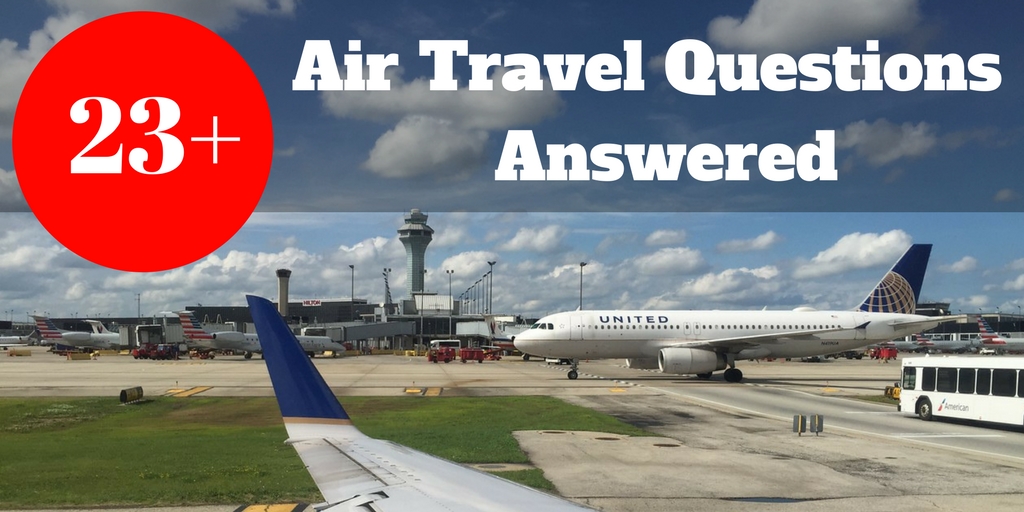
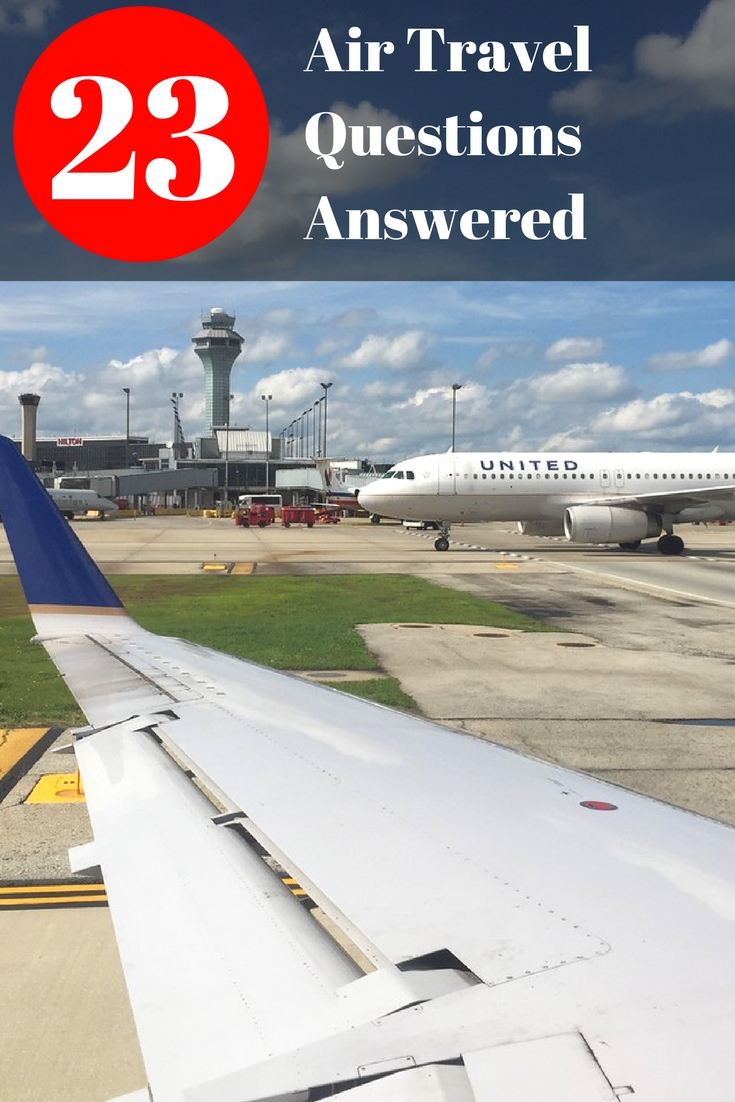
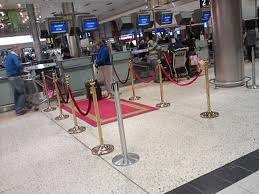 Air Travel – Getting Frequent Flyers “Red Carpet Treatment”
Air Travel – Getting Frequent Flyers “Red Carpet Treatment”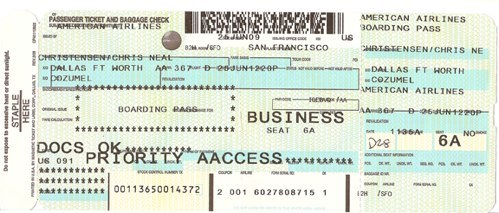 Tips for Saving Money on Airfare
Tips for Saving Money on Airfare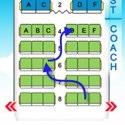 MySeatFinder – Get a Better Airplane Seat Automatically
MySeatFinder – Get a Better Airplane Seat Automatically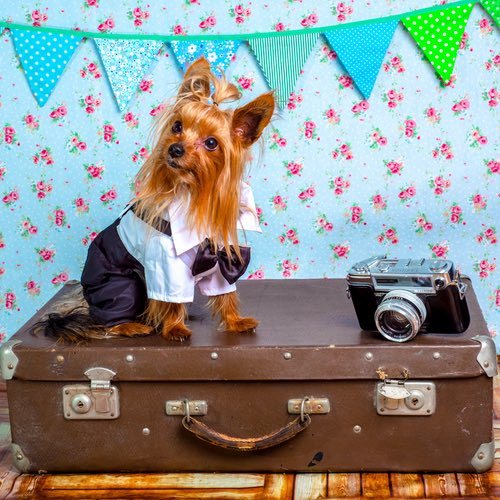 10 Tips for Taking a Dog on a Plane
10 Tips for Taking a Dog on a Plane


Mike Shubic (@MikesRoadTrip)
Says:July 13th, 2017 at 4:56 pm
Great info Chris!
chris2x
Says:July 14th, 2017 at 1:47 pm
thanks Mike!